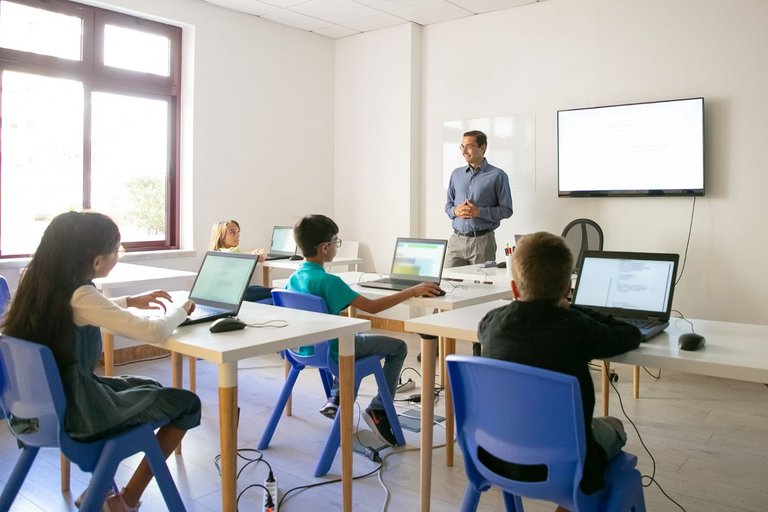
Immagine di Drazen Zigic su Freepik
Good morning, everyone! My name is Jessica, and I am an Italian pedagogue. I would like to contribute to this community by offering suggestions and reflections on education in both family and school settings. My contributions are based on my studies and professional experience as a teacher. Today, I want to describe an active teaching technique that, if you are a teacher, you can apply with your students. This post is not only addressed to teachers but also to parents of students. It's important that parents know how their children's teachers work so that they can collaborate actively and constructively with them. The teaching technique I am proposing is the FLIPPED CLASSROOM. Based on peer-to-peer instruction, the "flipped classroom" shifts rote and factual activities out of the classroom. In the classroom, students, guided by the teacher, engage in cooperative activities, problem-solving, laboratories, etc. To apply this and other teaching techniques even more effectively and productively, it is important to share knowledge of the basic principles of the technique with fellow teachers and receive their collaboration. Collaboration from parents and their trust in teachers and their professional abilities is also an important factor. This technique is suitable for implementing multidisciplinary educational interventions. It is useful for educating students to collaborate with peers to achieve a common goal and build positive interpersonal relationships. Thank you for reading my post! See you soon!
Students receive material in the format deemed most suitable (text, video, digital resources, etc.) to study theoretical content on a topic as homework.
Class time is then used for collaborative activities, experiences, debates, and workshops.
This technique strengthens educational interactions and peer learning in the classroom and addresses the needs of students who require more support.
Furthermore, it stimulates independent learning: the student, equipped with tools for further exploration, is aware of the path to take and the goals to achieve.It is useful to pursue the following objectives:
They must put into practice the knowledge they have acquired.
The learning process can be designed based on the characteristics of the students, allowing them to learn through various modalities.
The teacher takes on the role of the director of the teaching action. They must adequately prepare the content that the student autonomously accesses, leveraging the possibilities offered by technology.

Immagine di zinkevych su Freepik
Here are the implementation phases:
Setting: The classroom becomes a workspace for research and discussion, where knowledge is built and strengthened through interaction with the teacher and peers. It must be equipped with analog and digital materials and spaces to store them. Desks must be movable to be functional for the activities carried out.

Immagine di pch.vector su Freepik
